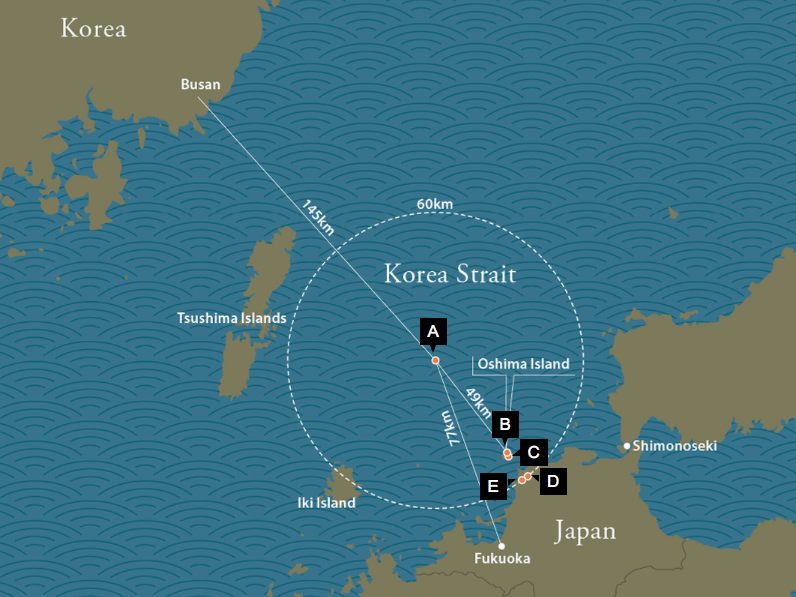Japan gained another UNESCO World Heritage-designated site over the weekend when the UN cultural body ruled in favor of the nation’s latest application at its annual committee session in Krakow, Poland. With this latest addition of Okinoshima island along with its three adjacent reefs and four other related sites, Japan now has 21 World Heritage sites in its arsenal, with no signs of stopping. There are currently two more areas in the process of being nominated for 2018.
Okinoshima (“A” on the map above) is a sacred island located between the Japanese archipelago and Korean peninsula with archaeological remains that show evidence of exchanges between Japan and other nations dating back hundreds of years. These artifacts also provide insight into how religious rites changed over a span of 500 years between the 4th and 9th centuries. Notable archaeological finds include gold rings from Korea, remnants of a glass bowl from Persia (now Iran), and more.
The World Heritage nomination has stirred some controversy as visits to the island are restricted to priests of the three Munakata Taisha shrines, with one exception. Men are allowed to visit the sacred isle once a year on May 27th, and even then they may not total more than 200. Women are not allowed to enter the island at all. Those visiting must be naked and partake in an ablution rite before reaching the island. They are also instructed to not take anything from the island home with them, nor speak of what they experienced while there.
Since members of the public are prohibited from entering Okinoshima and its resident shrine Okitsu-miya, visitors are directed to the other two shrines that belong to the same Munakata Grand Shrine. Hetsu-miya is located on the mainland of Kyushu, while Nataku-miya, along with the Okitsu-miya Yohaisho (worship hall) on nearby Oshima island.
For more information on visiting the Munakata Taisha on Oshima island visit okinoshima-heritage.jp
You can find all of UNESCO’s 1073 World Heritage sites on an interactive map on the official website.
Top illustration from www.okinoshima-heritage.jp/en/visit









